Bacteria Associated with Commercially Prepared Mealie Meal from Selected Food Stores in Lusaka District
Article Information
Adeyemo Dayo Omodele1*, Hang`ombe Bernard Mudenda1, John Bwalya Muma1, Musso Munyeme1, Martin Simuunza1, Adetayo Oluwafemi Adedayo2, Reinhold Haimbodi3, Akinjola Akinlolu4
1School of Veterinary Medicine, University of Zambia, Lusaka, Zambia
2Federal College of Animal Health & Production Technology, Moor Plantation, Ibadan, Nigeria
3Directorate of Veterinary Services, Ministry of Agriculture, Water and Land Reform, Namibia
4College of Medicine, University of Ibadan, Ibadan, Nigeria
*Corresponding Author: Adeyemo Dayo Omodele, Department of Disease Control, School of Veterinary Medicine, University of Zambia, Lusaka, Zambia
Received: 02 April 2022; Accepted: 11 April 2022; Published: 07 June 2022
Citation: Adeyemo Dayo Omodele, Hang`ombe Bernard Mudenda, John Bwalya Muma, Musso Munyeme, Martin Simuunza, Adetayo Oluwafemi Adedayo, Reinhold Haimbodi, Akinjola Akinlolu. Bacteria Associated with Commercially Prepared Mealie Meal from Selected Food Stores in Lusaka District. Journal of Food Science and Nutrition Research 5 (2022): 529-542.
View / Download Pdf Share at FacebookAbstract
Introduction
Mealie meal is a staple diet in Lusaka district of Zambia. Bacteria associated with commercially prepared mealie meal could be spoilage or pathogenic bacteria. Thus bacterial contamination could result from packaged mealie meal purchased from food stores.
Material and Methods
Cross sectional study was carried out from December 2019 - March 2020 for spoilage and pathogenic bacteria associated with mealie meal bought from selected retail outlet in Lusaka district. We performed cell culture for the Mealie Meal Samples collected at five study zones in Lusaka district viz: South, Central, East, West and North. Food stores in each zone were further stratified into sampling unit of interest: mall, shop and street food vendor.
Results
Preliminary laboratory findings revealed the followings: Spoilage Bacteria - Candida Species, Clostridium Species and Bacillus Species; Pathogenic Bacteria Species-Clostridium perfringens, Staphlococus aureus, Clostridium tetani, Bacillus, Escherichia coli, Pseudomonas aeruginosa and Yersinia pestis.
Conclusion
In conclusion, it can be established from the aforementioned laboratory results that food borne infections could evolve from bacteria associated with commercially prepared mealie meal bought from food stores in Lusaka district of Zambia.
Keywords
Maize flour, Bacterial contaminants, Food stores, Lusaka district
Maize flour articles; Bacterial contaminants articles; Food stores articles; Lusaka district articles
Maize flour articles Maize flour Research articles Maize flour review articles Maize flour PubMed articles Maize flour PubMed Central articles Maize flour 2023 articles Maize flour 2024 articles Maize flour Scopus articles Maize flour impact factor journals Maize flour Scopus journals Maize flour PubMed journals Maize flour medical journals Maize flour free journals Maize flour best journals Maize flour top journals Maize flour free medical journals Maize flour famous journals Maize flour Google Scholar indexed journals Bacterial contaminants articles Bacterial contaminants Research articles Bacterial contaminants review articles Bacterial contaminants PubMed articles Bacterial contaminants PubMed Central articles Bacterial contaminants 2023 articles Bacterial contaminants 2024 articles Bacterial contaminants Scopus articles Bacterial contaminants impact factor journals Bacterial contaminants Scopus journals Bacterial contaminants PubMed journals Bacterial contaminants medical journals Bacterial contaminants free journals Bacterial contaminants best journals Bacterial contaminants top journals Bacterial contaminants free medical journals Bacterial contaminants famous journals Bacterial contaminants Google Scholar indexed journals Food stores articles Food stores Research articles Food stores review articles Food stores PubMed articles Food stores PubMed Central articles Food stores 2023 articles Food stores 2024 articles Food stores Scopus articles Food stores impact factor journals Food stores Scopus journals Food stores PubMed journals Food stores medical journals Food stores free journals Food stores best journals Food stores top journals Food stores free medical journals Food stores famous journals Food stores Google Scholar indexed journals Lusaka district articles Lusaka district Research articles Lusaka district review articles Lusaka district PubMed articles Lusaka district PubMed Central articles Lusaka district 2023 articles Lusaka district 2024 articles Lusaka district Scopus articles Lusaka district impact factor journals Lusaka district Scopus journals Lusaka district PubMed journals Lusaka district medical journals Lusaka district free journals Lusaka district best journals Lusaka district top journals Lusaka district free medical journals Lusaka district famous journals Lusaka district Google Scholar indexed journals meal articles meal Research articles meal review articles meal PubMed articles meal PubMed Central articles meal 2023 articles meal 2024 articles meal Scopus articles meal impact factor journals meal Scopus journals meal PubMed journals meal medical journals meal free journals meal best journals meal top journals meal free medical journals meal famous journals meal Google Scholar indexed journals Food stores articles Food stores Research articles Food stores review articles Food stores PubMed articles Food stores PubMed Central articles Food stores 2023 articles Food stores 2024 articles Food stores Scopus articles Food stores impact factor journals Food stores Scopus journals Food stores PubMed journals Food stores medical journals Food stores free journals Food stores best journals Food stores top journals Food stores free medical journals Food stores famous journals Food stores Google Scholar indexed journals food vendor articles food vendor Research articles food vendor review articles food vendor PubMed articles food vendor PubMed Central articles food vendor 2023 articles food vendor 2024 articles food vendor Scopus articles food vendor impact factor journals food vendor Scopus journals food vendor PubMed journals food vendor medical journals food vendor free journals food vendor best journals food vendor top journals food vendor free medical journals food vendor famous journals food vendor Google Scholar indexed journals food borne infections articles food borne infections Research articles food borne infections review articles food borne infections PubMed articles food borne infections PubMed Central articles food borne infections 2023 articles food borne infections 2024 articles food borne infections Scopus articles food borne infections impact factor journals food borne infections Scopus journals food borne infections PubMed journals food borne infections medical journals food borne infections free journals food borne infections best journals food borne infections top journals food borne infections free medical journals food borne infections famous journals food borne infections Google Scholar indexed journals gastroenteritis articles gastroenteritis Research articles gastroenteritis review articles gastroenteritis PubMed articles gastroenteritis PubMed Central articles gastroenteritis 2023 articles gastroenteritis 2024 articles gastroenteritis Scopus articles gastroenteritis impact factor journals gastroenteritis Scopus journals gastroenteritis PubMed journals gastroenteritis medical journals gastroenteritis free journals gastroenteritis best journals gastroenteritis top journals gastroenteritis free medical journals gastroenteritis famous journals gastroenteritis Google Scholar indexed journals
Article Details
1. Introduction
Despite Mealie Meal being of economic and nutrition importance, some food borne infections have been inevitably associated with some of the bacterial species. Worldwide, maize and maize products have been implicated to be among the important vehicles of gastrointestinal infections. Nituli et al. noted that some of the gastrointestinal infections caused by various Bacteria species found in maize products resulted in food poisoning that at times led to death. Bacteria species infections vary from acute diarrhoea, septicemia and gastroenteritis to primary sepsis and necrotizing fasciitis and are increasing particularly in developing and middle-income countries where infectious diseases and poverty are endemic. Notable bacterial isolates from Mealie Meal include the Gram-positive and Gram-negative bacteria. They are:
I Gram-negative bacteria: are bacterial species found in a wide range of habitats including the soil, gastrointestinal tract of humans and animals by food contaminations [1-3]. Examples are Escherichia coli, Pseudomonas aeruginosa and Yersinia pestis: they contribute significantly to the Food-Borne Disease burden in Low and Medium Income Countries.
II Gram-positive bacteria Notable food borne pathogens within this group are Bacillus, Listeria, and Staphylococcus.
These can tolerate harsh food storage and processing conditions such as low temperature, low moisture content, and high acidity and salinity. These capabilities make them a major concern for food safety [4-9]. The World Health Organization (WHO) of the United Nations reported that LMICs, particularly those in the African and South-East Asian sub-regions, suffer significantly from the burden of Food Borne Disease, sometimes resulting to huge economic losses. To put this into proper perspective, the World Bank estimates that the total productivity loss associated with Food Borne Disease in Low and Medium Income Countries is about US$44.4 billion per year, whereas the annual cost of treating these diseases costs several billion dollars. Food-Borne Disease constitutes a major impediment to growth and development in the affected Low and Middle-Income Countries because resources used in treating these preventable diseases could be redistributed into building other sectors of the economy [9-11]. Also, Food-Borne Disease poses a threat to several of the Sustainable Development Goals of the United Nations in Low and Middle-Income Countries. Currently, more than 2 million deaths occur every year in developing countries due to food borne diseases, which are more than the 13 zoo noses implicated in over 2 billion illnesses worldwide. Those most affected are aged people, infants, children, and people with immunocompromised immune systems due to a weakened immune system. It is therefore important that public health is taken into serious considerations in developing countries. In Africa, over 91 million people are affected according to a recent report by the World Health Organization. It was also stated that 2.2 million children die of diarrhea every year in developing countries, while more than 600,000children are reported to have died on yearly basis as a result of consumption of unsafe food in Southeast Asia [11-15].
2. Material and Methods
Research Design
The cross-sectional descriptive study design was used to detect the presence of Bacterial species in packaged Mealie meal sold in Lusaka District. It was a laboratory-based study in which Mealie Meal samples from the field were analyzed for the presence of Bacterial species.
Study Sites
The study was conducted in Lusaka City, situated in Lusaka Province of Zambia with central geographical coordinates of 13° 24' 24'' S and 28° 17' 13'' E as shown in figures 1,2 below. The city´s administrative area covers approximately 420Km² with a projected population of 2,520,102 in 2018 as indicated by the Central Statistics Office(2013). Lusaka District has the largest share of 79.3 per cent of the urban population in Lusaka Province, shares with other three districts within the province and one district from Central Province and accounts for 32 per cent of the total urban population of the country (Central Statistical Office, 2012). The study area was chosen because of its history of the recurring food borne disease outbreaks associated with bacterial infections. Besides easy accessibility and convenience for collection of samples required for the study was also another factor for the choice of the district [16-18].
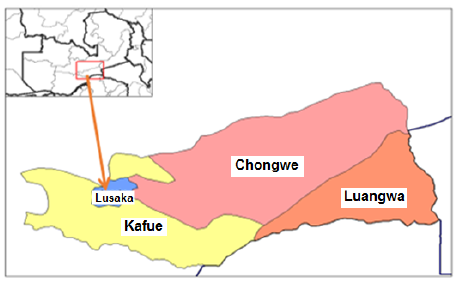
Figure 1: Map showing the study area- Lusaka District
Study population
In the Lusaka district of Zambia, food stores are situated around the low, medium and high population density. Thus Lusaka district was mapped out into five study areas namely: South, Central, East, West and North. Food stores in each area were further randomly stratified into sampling units of interest: mall, shop and street food vendor. Mealie Meal, popularly known as Breakfast by Lusaka Household dwellers, is all but available in every food store at varying weight and sizes in a containing bag. Intending consumers could also obtain ready to cook size from plastic containers peddled by street food vendors [18-21].
Sampling techniques
The study employed a probabilistic sampling technique for an equal selection of sampling units. Stratified random sampling was used for the selection of both the sampling frame and units. Stratified sampling "allows the researcher to obtain an effect size from each stratum separately as if it was a different study. The stratum for the sampling frame was based on Lusaka District Health Office's operational sub-Districts from which the sampling stratum was selected based on simple random sampling [22,23].
Sample size
The sample size was calculated based on Cochran’s sample size formula;

Where, Z = value of the standard normal distribution corresponding to a significance level ofa (1.96 for α= 0.05), p = 0.5, q = 1- p and d = 0.05.
With p = 0.5 to yield the maximum value assuming that, estimate required was to be within five (5) per cent of the true value in either direction, Confidence Interval (CI) of 95 percent was used. Based on the formula, the calculated sample size (n) was 143 packaged Mealie Meal samples from selected food stores in Lusaka District.
Sample collection
I43 Packaged Mealie Meal of different brands was bought from selected food stores (Street food vendor, Shops and Malls) of each study area. Samples were obtained by a simple stratified randomly selection from Food Stores in Lusaka District. Thus Mealie Meal samples bought from Street food vendors were 96 (67%), Shops-30 (21%), Malls-17 (11.9%) [24-27]. The representative samples were transported in packaged plastic bags with a label and stored at ambient temperature in the Biosafety Laboratory of the Department of Disease Control, School of Veterinary Medicine, University of Zambia, before laboratory investigations.
|
Storage Facility |
Lusaka EAST |
Lusaka CENTRAL |
Lusaka SOUTH |
Lusaka NORTH |
Lusaka WEST |
|
Food Store |
Mtendere |
Soweto |
Chilenje |
Garden |
Apollo |
|
Homes |
Streets |
Streets |
Streets |
Streets |
Streets |
|
Shops |
Shops |
Shops |
Shops |
Shops |
Shops |
|
Malls |
Malls |
Malls |
Malls |
Malls |
Malls |
|
Kalingalinga |
Kabulonga |
Makeni |
Northmead |
Mungwi |
|
|
Streets |
Streets |
Streets |
Streets |
Streets |
|
|
Shops |
Shops |
Shops |
Shops |
Shops |
|
|
Malls |
Malls |
Malls |
Malls |
Malls |
|
|
Ibex Hills |
Woodlands |
Hillview |
Olympia |
Matero |
|
|
Streets |
Streets |
Streets |
Streets |
Streets |
|
|
Shops |
Shops |
Shops |
Shops |
Shops |
|
|
Malls |
Malls |
Malls |
Malls |
Malls |
*Food Samples (Mealie Meal) bought from Streets, Shops and Malls.
Table 1: Selected Sampling Sites
Bacteriological analysis of samples culture, isolation and identification of packaged mealie meal samples
All samples were processed in the Department of Disease Control, Microbiological Laboratory at the University of Zambia, Faculty of Veterinary Medicine.25 grams of mealie meal was mixed with fifty ml of distilled water in containing bottle, and allowed to settle for 2 hours.10 MLS of the supernatant was centrifuged at 3000 rpm for 10 minutes. For Clostridia and Stapyloocous species, eight ml of Brain heart infusion broth (BHIB) was added to the precipitate, which was heated for germination at 808C for 10 min [28-30]. This was then subcultured to BHIB and incubated anaerobically in the BBL anaerobic jar at 378C for 48 h. For other organisms, serial dilutions (10-1 to 10-5) were prepared and plated in triplicate into each specific medium. Aliquots, 0.1 ml and 1 ml, of each dilution, were used for spread plating and poured plating respectively, into the various media. To detect and characterize other spoilage and pathogenic bacteria, standard method ajar was employed and incubated at 37 degrees centigrade for 24 hours. Representative sample colonies based on cultural characteristics were inoculated into the nutrient broth (Merck HG000C42) at 37 ºC overnight and streaked into the nutrient slant for further analysis. Coli forms were cultured on eosin methylene blue media, incubated at 37 ºC for 24 - 48h. Bacillus cereus was cultured using Macconkey agar, which was incubated at 37 ºC for 24 h [31-33]. The plates were incubated at 25 ºC for 7 days. Consequently, Gram-stained smears of the different cell colonies were identified from slides by Olympia light microscope. Only Mealie Meal bought from selected street vendors, shops and malls of Lusaka District were included in this study. The brand names or the producers of Mealie Meal were not taken into consideration [34-36].
Data analysis
To answer the objectives of the study, data was analyzed based on the generated laboratory results. Experimental data collected were analyzed using Chi-square. The statistical significance was defined at P<0.05.
Ethical consideration
This study was undertaken by the ethical recommendations of the University of Zambia and Convergence Research Ethics Centre, Reference No. All the Mealie Meals for the study were bought directly from the street vendors, shops and malls in the Lusaka district for local consumption.
2. Results
A total of One Hundred and forty-three (n=143) mealie meal samples were sourced from Street vendors, Shops and Malls. The total number of mealie meal samples collected for Bacterial analysis is indicated in figure 1. A higher number of samples were collected from the street sellers. In the shops and malls, not so many sell mealie meal. The collected samples were analyzed with results provided in table 1,2. The results indicate a higher percentage of contaminated mealie meal from streets while the malls had the least contamination in terms of bacteria isolated. The mealie meal samples from all the sources had a bacterial isolation rate of more than 50%. Mealie meal specimen from the streets (75%) had a higher isolation rate, followed by mealie meal from the shops (60%) and the least from the malls at 53%. The overall isolation rate was 69% (Figures 3-7).
Bacteria Species identified from the mealie meal sold in the Streets of Lusaka District The Bacteria species isolated and identified in the mealie meal sampled from the street are indicated in table 3 as shown below. The most common or predominant bacteria to be isolated from mealie meal being sold by street vendors were: Staphyloccocus aureus and Clostridium perfringens. The streets with more than 10% samples identified for bacteria species were Soweto (12.5%), Olympia (10.4%) and Hillview (10.4%).
Bacteria Species identified from the mealie meal sold in Shops of Lusaka District
Mealie Meal procured from the shops were found with Bacteria indicated in table 2. The commonest bacteria to be isolated from selected shops in Lusaka district are Staphyloccocus aureus and Clostridium perfringens. They were found mosttly in Kabulonga, Libala and Chilenje Compounds. The shops with greater than 10% samples identified were: Kabulonga (26.7%), Chilenje (23.3%) and Libala (26.7%).
Bacteria Species identified from the mealie meal sampled from the malls
The Bacteria Species isolated and identified from the malls are indicated in tables 4,5. The predominant bacteria isolated from the selected malls of Lusaka Distrcit were Staphyloccocus aureus and Clostridium perfringens. They were found mostly in Makeni area. The shops with greater than 10% samples identified were: Mutendere (17.6%) and Ibex Hill (58.8%).
|
Bacteria Presence |
Street |
Shop |
Mall |
Total |
||||
|
*n |
% |
N |
% |
n |
% |
n |
% |
|
|
Present/Positive |
72 |
75 |
18 |
60 |
9 |
53 |
99 |
69 |
|
Absent/ Negative |
24 |
25 |
12 |
40 |
8 |
47 |
44 |
31 |
|
Total |
96 |
100 |
30 |
100 |
17 |
100 |
143 |
100 |
*n means number of mealie meal samples.
Table 2: Mealie meal analysed for bacteria from selected food stores in Lusaka District
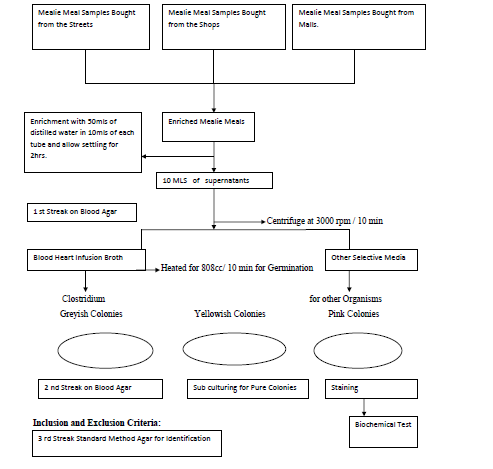
Figure 2: A Flowchart for detection of Spoilage and Pathogenic Bacteria from Mealie Meal
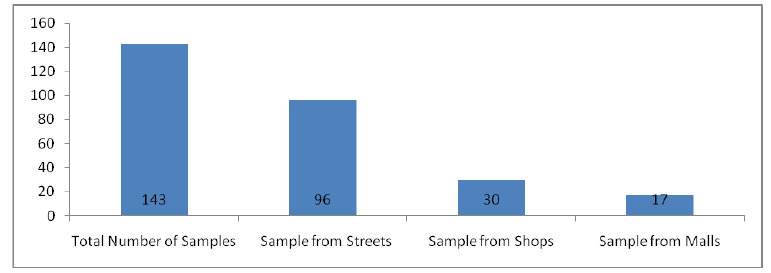
Figure 3: Total number of samples collected for this study

Figure 4: Samples analyzed for Bacteria from Selected Food Stores in Lusaka District
*Name of the street where the mealie meal was purchased
Table 3: Bacteria Species identified from the Selected Street of Lusaka District
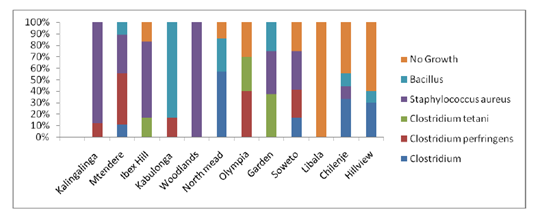
Figure 5: Bacteria identified from mealie meal sampled from the streets
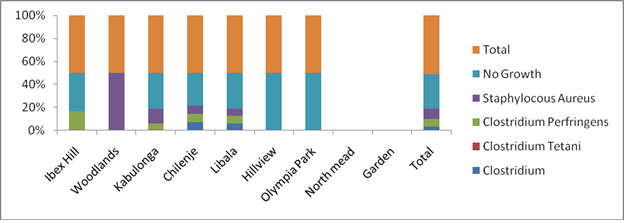
Figure 6: Bacteria Species Identified from Selected Shops in Lusaka District
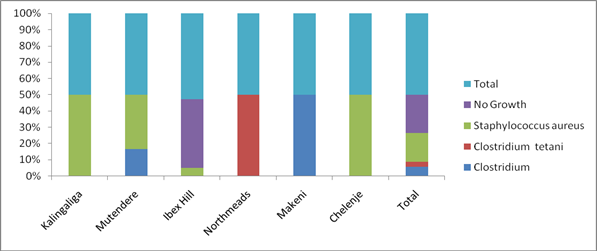
Figure 7: Bacteria Species Identified from Selected Malls in Lusaka District
|
Mall/Species |
Clostridium |
Clostridium Tetani |
Staphylococcus Aureus |
No Growth |
Total |
Percentage |
|
Kalingaliga |
0 |
0 |
1 |
0 |
1 |
5.9 |
|
Mutendere |
1 |
0 |
2 |
0 |
3 |
17.6 |
|
Ibex Hill |
0 |
0 |
1 |
8 |
10 |
58.8 |
|
Northmeads |
0 |
1 |
0 |
0 |
1 |
5.9 |
|
Makeni |
1 |
0 |
0 |
0 |
1 |
5.9 |
|
Chelenje |
0 |
0 |
1 |
0 |
1 |
5.9 |
|
Total |
2 |
1 |
6 |
8 |
17 |
*Malls where mealie for sampling was collected
Table 4: Bacteria Species Identified from Selected Malls in Lusaka District

Figure 8: Causal Organisms identified from Mealie Meal after boiling.
Mealie Meal Spoilage and Pathogenic Bacteria Species identified after Boiling in Water Bath
These are casual organisms may cause Food Poisoning intoxication as a result of their toxic products and survival at higher temperature. In this study, they include Bacillus and Clostridium (perfringens and tetani) Species. The Bacillus cerus was isolated from Soweto, Chilenje and Hillview markets, Clostridium perfirngens from Soweto and Olympia markets and Clostridium tetani from Garden (Figures 8,9).
Mealie Meal Pathogenic Bacteria Species identified from the study
The International Commission on Microbiological Specification for Foods (ICMSF) devised a scheme for sampling which incorporates a 2-class plan and 3-class plan. The 2-class plan provides presence or absence criteria for an intestinal pathogen. The 3-class plan is based on enumeration levels (Colony counting) of the general bacterial flora. It takes into account maximum and minimum levels. For this research; we adopt the 2-class plan and also grouped the food borne pathogens into three categories according to the degree of hazard (Table 5).
|
Degree of Hazard |
Foodborne Pathogens |
|
Severe, often fatal |
Clostridium perfringens |
|
Moderate with potential for spread |
Gram negative rods ( E coli and Pseudomonas aeuroginosa ) |
|
Moderate with limited spread |
Bacillus cereus and Staphylococci aureus |
Table 5: Mealie Meal Food borne Bacteria Species identified
4. Discussion
Isolation of Bacteria species from selected Food Stores in Lusaka District
One hundred and forty-three mealie meal samples from different brands were collected from selected food stores in Lusaka District. Randomly sampled mealie meals from various producers after buying were subjected to bacteriological analysis that includes aerobic and anaerobic culture. To achieve this set objective, Mealie meals of 143 samples were suspended in the water bath following brain heart infusion, blood agar and nutrient agar. Bacteria colonies growing in the above media were identified, and the DNA extract was further subjected to molecular analysis. The preliminary laboratory findings revealed the followings: Spoilage organisms - Clostridium Species and Bacillus Species; Pathogenic Bacteria Species-Clostridium perfringens, Staphylococcus aureus, Clostridium tetani, Bacillus, Escherichia coli, Pseudomonas aeruginosa and Yersinia pestis. Therefore, it can be established from the aforementioned laboratory results that food poisoning outbreak could evolve from food stores in Lusaka district apart from water contamination.
Public Health Significance of the results
Mealie Meal Microbial contaminants could invade the Food Stores as illustrated by the schematic diagram shown:
Therefore proper environmental sanitation and hygienic practice of the household dwellers of Lusaka District must be enhanced, especially during the rainy season, as shown from the above diagram. It would serve as determinants of food safety and culminate invariably in the prevention of food borne diseases from microbial contaminants. Microorganisms may be introduced from food handlers in the restaurant, canteen, shops and malls or at home during the preparation of the Mealie meal. Raw foods can also bring food poisoning organisms into kitchens may contaminate processed foods directly or by transfer of the microorganisms via hands, surfaces and equipment. Poisonous substances may be produced by the growth of bacteria and moulds in food. Other sources of harmful substances must not be overlooked. Therefore food should be nourishing and attractive. It must be visibly clean, and it must also be free from noxious material. These harmful substances may be poisonous chemicals and even chemical harmless in small amounts, but damaging in large quantities. They may enter the food accidentally during preparation or accumulate in the food during storage in metal containers.
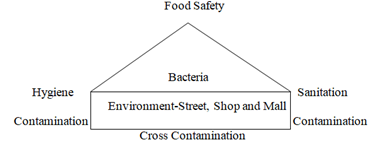
Figure 9: Schematic Diagrams for Food Safety & Microbial Contaminants
5. Conclusions
The study demonstrated the presence of Bacteria species in Mealie Meal sold at retail points in the selected food stores of Lusaka district.Vibrio cholera and salmonellae were not detected but others bacteria species were isolated. These are Spoilage Organisms: Clostridium and Bacillus Species; Pathogenic Bacteria Species-Clostridium perfringens, Staphylococcus aureus, Clostridium tetani, Bacillus, Escherichia coli, Pseudomonas aeruginosa and Yesinia pestis.The food safety aspect of Mealie Meal sold in Lusaka District is contaminated with Bacteria species that may be of public health significance.
Recommendations
More extensive research on the prevalence of Bacteria species in all types of Mealie Meal sold at the retail level in the country is needed for an overall risk assessment of consuming undercooked maize products. It is important to start documenting Bacteria species distribution on the country’s food stores environments for epidemiological linkages with sporadic gastroenteritis and other bacteria like infections. Development of educational messages targeting Mealie Meal producers and traders on the importance of proper hand hygiene and adequate cooking of Mealie Meal flours for human consumption. Continuous monitoring of antibiotic resistance patterns of Bacteria strains as there could be an emergence of drug-resistant bacteria from mealie meal.
References
- Compendium of methods for the microbiological examination of foods. American Public Health Association, Washington DC (2001).
- Government of the Republic of Zambia (GRZ). Urban Studies, Technical Assistance to the DISS-Markets, Studio Bichara s.r.l. Lusaka (2000).
- Chibuye, Miniva. Interrogating urban poverty lines- the case of Zambia. Environment and urbanization.Environment and Urbanization 26 (2014): 236-256.
- Chisanga and Zulu-Mbata. The changing food expenditure patterns and trends in Zambia: implications for agricultural policies (2018).
- Da Silva ML, Matte GR, Germano PML et al. The occurrence of pathogenic microorganisms in fish sold in Sao Paulo, Brazil'. Journal of Food Safety 30 (2010): 94-110.
- Olumide A Odeyemi. Public health implications of microbial food safety and foodborne diseases in developing countries (2016).
- Jayne TS, Argwings-Kodhek G. Consumer response to maize market liberalization in urban Kenya Food Policy 22 (1997): 447-458.
- Food and Agricultural Organization Statistical Databases (2005).
- FAO/CIMMTY. White Maize: a Traditional Food Grain in Developing Countries. Food and Agricultural Organization/International Maize and Wheat Improvement Centre (1997).
- Johnson L. Corn: The major cereal of the Americas. In: Kulp K, Ponte-Jr JG. (eds.), Handbook of Cereal Science and Technology (pp. 31-80). New York: Marcel Dekker, Inc (2000).
- Technical Specifications for the manufacture of Maize meal (2014): 1-5.
- Tembo MS. Nshima and Ndiwo are the most important pair of staple foods among Zambians in Southern Africa (2007).
- Watson SA, Ramstad PE. Corn: Chemistry and Technology. American Association of Cereal Chemists, St. Paul, MN (1987).
- World Food Program (WFP) (2012).
- Hansen Tranberg K. The Informalisation of Lusaka's Economy: Regime Change, Ultra Modern Markets, and Street Vending, Unpublished paper presented at Conference" Zambia: Independence and After" on (2005) August 11-13 Lusaka.
- MOST/Roche/USAID. Fortification Basics: Maize Flour/Meal. Iron Deficiency Project Advisory Services(IDAS), paper 1155 (2003).
- Betty C Hobbs, Diane Roberts. Food Poisoning and Food Hygiene, (5th edtn), Edward Arnold (Publishers) Limited Page (1987): 58.
- Bernard Mudenda Hang`ombe VMM 7120 Lecture Note on Applied Microbiology and Nutritional Toxicology (2019).
- Nchito Wilma. Corruption in Urban Markets, Paper presented at OSSREA Conference, 8-9 April (2003), Lusaka.
- Nyirenda DB, Musukwa M, Mugode RH. The common Zambian foodstuff, ethnicity, preparation and nutrient composition of selected foods Ministry of Health, Zambia and Boston University, USA (2007).
- Ntuli V, Mekibib SB, Molebatsi N, et al. Microbial and Physicochemical Characterization of Maize Wheat Flour from a Milling Company, Lesotho. Internet Journal of Food Safety 15 (2013): 11-19.
- Osunla C, Okoh A. Vibrio Pathogens: A Public Health Concern in Rural Water Resources in Sub-Saharan Africa. International Journal of Environmental Research and Public Health 14 (2017): 1188.
- Steyn NP, Mchiza J. Obesity and the nutrition transition in Sub-Saharan Africa. Annals of the New York Academy of Sciences 1311 (2011): 88-101.
- Peplinski AJ, Anderson RA, Alaksiewicz FB. Corn dry-milling studies: Shortened mill flow and reduced temper time and moisture. Cereal Chemistry 61 (1984): 60-62.
- Maize market assessment and baseline study for Zambia. Regional Agricultural Trade Expansion Support (RATES) programme, RATES Center, Nairobi, Kenya (2003).
- Hafeez Y, Iqbal A, Ahmad M. Biotyping of Bacillus cereus From the street vendor Foods in Srinagar area of Kashmir. Veterinary World 5 (2012): 590-593.
- Berghofer LK, Hocking AD, Miskelly D, et al. Microbiology of wheat and flour milling in Australia. International Journal of Food Microbiology 85 (2003): 137-149.
- Hangombe Mudenda Bernard. Module Lecture Note on VMM 7120 Applied Food Microbiology and Nutritional Toxicology (2019): 19-21
- Jayne TS, Rubey L, Tschirley D, et al. Effects of market reform on access to food by low-income households: Evidence from four countries in Eastern and Southern Africa. Technical Paper No. 25. Bureau for Africa/USAID (1996).
- Ruangpan L, Tendencia EA. Bacterial isolation, identification and storage. In Laboratory manual of standardized methods for antimicrobial sensitivity tests for bacteria isolated from aquatic animals and environment (2004).
- De Noordhout CM, Devleesschauwer B, Angulo FJ, et al. sThe global burden of listeriosis: A systematic review and meta- analysis. The Lancet Infectious Diseases 14 (2014): 1073-1082.
- Jaffee S, Henson S, Unnevehr L, et al. The safe food imperative: Accelerating progress in low-and middle-income countries. Agriculture and food series. Washington DC (2019).
- Laleye L, Wesley A. Small Scale Fortification, Draft of paper presented at the 2001 AACC Annual Meeting, Charlotte, NC Symposium: Enhancing the Micronutrient Content of Cereal Grains and Product, Micronutrient Initiative, Ottawa, Canada (2001).
- Lartey A, Manu A, Brown KH, et al. A randomized, community-based trial of the effects of improved, centrally processed complementary foods on growth and micro-nutrient status of Ghanian infants from 6 to 12 mo of age. American Journal of Clinical Nutrition 70 (1999): 391-404.
- Faber M, Kvalsvig JD, Lombard CJ, et al. Effect of a fortified maize- meal porridge on anaemia, micronutrient status, and motor development of infants. The American Journal of Clinical Nutrition 82 (2005): 1032-1039.
- Wiggins S. Regional Issues in Food Security for Southern Africa. Forum for Food Security in southern Africa, Overseas Development Institute (2003).
